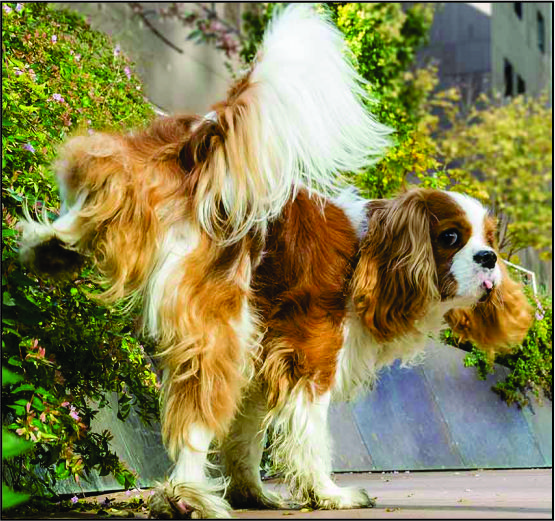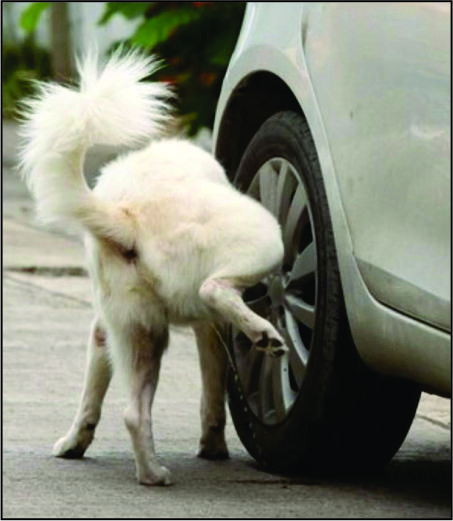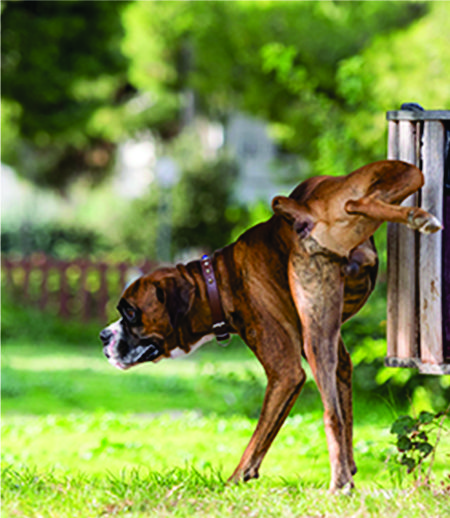Dog Training
Mastering the Art of Housetraining a Dog: A Comprehensive Guide.
Housetraining a dog requires patience, consistency, and understanding. Establish a routine aligned with your dog’s needs, including regular feeding times and frequent outdoor trips. Use positive reinforcement, praising and rewarding outdoor elimination. Avoid punishing accidents; instead, clean up calmly and prevent future incidents. Consider crate training to teach bladder and bowel control, ensuring the crate is a positive space. Remember that each dog learns differently; stay patient and consistent. Seek professional help if needed. With dedication, your dog will soon respect your home’s rules.
Table of Contents
Toggle
Understanding the Basics of Canine Behavior and Housetraining.
Understanding dog psychology and canine instincts is crucial for fostering a strong bond with our furry companions. Puppies, like human infants, undergo critical developmental stages that shape their future behaviors and temperaments. During these formative months, they learn essential social skills and begin to interpret the world around them. Potty training, a fundamental aspect of puppy development, taps into their natural instincts to keep their living areas clean.
This process requires patience and consistency, as dogs learn through repetition and positive reinforcement. Interestingly, a dog’s learning patterns are closely tied to their evolutionary history as pack animals, making them particularly receptive to clear leadership and routine. By recognizing these innate tendencies and adapting our training methods accordingly, we can create a nurturing environment that supports healthy puppy development and lays the foundation for a well-adjusted adult dog. As we delve deeper into canine psychology, we gain invaluable insights that not only improve our training techniques but also enhance our overall relationship with these loyal and intelligent creatures.
Creating a Positive Environment for Successful Housetraining.
Creating a dog-friendly home environment requires thoughtful consideration of both safety and comfort for our canine companions. Safe spaces, such as designated areas with cozy beds or crates, provide dogs with a sense of security and a place to retreat when feeling overwhelmed. Crate training, when done correctly, can be an invaluable tool in establishing these safe spaces and aiding in house training. It’s essential to approach crate training with patience and positivity, ensuring the crate is associated with pleasant experiences rather than punishment.
Positive reinforcement techniques, such as rewarding desired behaviors with treats or praise, play a crucial role in shaping a dog’s behavior and strengthening the bond between pet and owner. Consistency in training is key; all family members should adhere to the same rules and commands to avoid confusing the dog. By implementing these strategies and maintaining a patient, understanding approach, we can create a harmonious living environment that meets both human and canine needs, fostering a deeper connection with our furry friends.
Establishing a Routine: The Key to Effective Housetraining.
Establishing a well-structured routine is essential for successful dog training. A thoughtful approach to feeding, potty breaks, and exercise creates a foundation for a dog’s physical and mental well-being. Consistent mealtimes not only aid in digestion but also help set expectations for potty breaks, making housetraining more manageable. Regular exercise, tailored to the dog’s age and breed, is crucial for burning excess energy and promoting good behavior.
Incorporating training sessions into this routine, using consistent commands and cues, reinforces learning and strengthens the bond between dog and owner. Timing plays a critical role in this process; rewarding desired behaviors immediately helps dogs make positive associations, while addressing unwanted behaviors promptly prevents reinforcement of bad habits. By carefully considering and implementing these elements, owners can create a harmonious environment that fosters their dog’s growth and development, leading to a well-adjusted and obedient companion.

Recognizing and Responding to Your Dog's Potty Signals.
Understanding dog body language is a crucial skill for pet owners, allowing them to anticipate their furry companions’ needs and respond promptly. By observing subtle behavioral cues, such as tail position, ear movements, and facial expressions, attentive owners can gain valuable insights into their dogs’ emotional states and physical requirements. This heightened awareness enables a more proactive approach to pet care, often preventing potential accidents or unwanted behaviors before they occur.
For instance, recognizing signs of restlessness or frequent sniffing may indicate a need for a bathroom break, while excessive panting or seeking cool surfaces might suggest discomfort due to heat. By promptly addressing these signals, pet owners can create a more harmonious living environment and strengthen the bond with their canine friends. Moreover, this attentiveness fosters a deeper understanding between humans and their pets, leading to improved communication and a more fulfilling relationship overall.

Dealing with Accidents: The Do's and Don'ts.
When addressing pet accidents, it’s essential to approach the situation with patience and understanding. Cleaning up promptly and thoroughly using enzyme cleaners is crucial, as these products effectively break down organic matter and eliminate odors, reducing the likelihood of repeat incidents. Rather than resorting to punishment, which can create fear and anxiety in pets, it’s more effective to focus on redirecting their behavior to appropriate locations.
This process requires consistent guidance and positive reinforcement, rewarding pets when they eliminate in the correct areas. By creating a supportive environment and using gentle corrections, pet owners can help their furry companions learn and adapt to desired behaviors. This thoughtful approach not only maintains a clean home but also strengthens the bond between pets and their owners, fostering a relationship built on trust and mutual respect.
Special Considerations for Different Ages and Breeds.
Housetraining dogs is a nuanced process that varies significantly across different life stages and breeds. Puppies require consistent, patient guidance as they develop bladder control and learn to associate specific areas with elimination. Adult dogs needing retraining often present unique challenges, as they may have ingrained habits that need gentle but persistent correction. Breed-specific traits can influence housetraining success; for instance, some smaller breeds may have higher metabolisms and need more frequent potty breaks.
Senior dogs facing incontinence due to age-related issues require a compassionate approach, often involving a combination of medical intervention and environmental management. The contrast between small and large dog training is noteworthy; while smaller dogs may need more frequent outings, larger breeds typically have greater bladder capacity but may take longer to develop full control. Regardless of size or age, successful housetraining hinges on understanding each dog’s individual needs, maintaining a consistent routine, and fostering a positive, supportive environment that encourages proper habits.
Troubleshooting Common Housetraining Issues.
When addressing behavioral issues in dogs, it’s crucial to consider multiple factors that could contribute to regression in training or problematic behaviors. Marking behavior, for instance, may resurface due to stress or changes in the dog’s environment, requiring a thoughtful reassessment of the training approach. Anxiety-related accidents, such as house soiling or destructive behavior, often stem from underlying emotional distress and necessitate a compassionate, patient response from owners.
It’s equally important to rule out medical issues, as physical discomfort or illness can manifest as behavioral changes, emphasizing the need for regular veterinary check-ups. Environmental factors, including changes in routine, new family members, or even subtle alterations in the home, can significantly impact a dog’s behavior and training progress. By carefully examining these various aspects, owners and trainers can develop a holistic understanding of the dog’s needs and create a tailored plan to address regression and promote positive behavioral development.

Advanced Techniques for Reinforcing Good Habits.
Potty training a puppy requires a thoughtful approach, combining various techniques to create a comprehensive and effective strategy. Clicker training, with its precise timing and positive reinforcement, can help puppies associate the desired behavior with a reward, making the learning process clearer and more engaging. Scent training, on the other hand, taps into a dog’s natural instincts, using specific odors to guide them to appropriate elimination areas.
Bell training offers an innovative way for puppies to communicate their needs, empowering them to actively participate in the process. Creating a designated outdoor potty area provides consistency and helps puppies understand where they should relieve themselves. As training progresses, gradually extending the time between breaks challenges puppies to develop better bladder control while building trust in their ability to communicate their needs. This multi-faceted approach not only addresses the immediate goal of house training but also fosters a deeper bond between puppies and their owners, laying the foundation for a harmonious relationship based on clear communication and mutual understanding.
Conclusion: Celebrating Success and Maintaining Progress in Housetraining.
As we conclude our journey through housetraining, it’s important to take a moment to reflect on the progress you and your furry companion have made. Every successful potty trip outside, every accident-free day, and every positive reinforcement given are steps toward a well-trained and happy pet.
Remember that consistency is key in maintaining this newfound success. Continue to stick to your established routine and reward system, even as accidents become less frequent. This will help solidify good habits and prevent any backsliding.
It’s also worth noting that setbacks can happen, even with the best-trained pets. Don’t be discouraged if there’s an occasional accident – instead, view it as an opportunity to reinforce training and strengthen your bond with your pet.
As you move forward, celebrate the small victories and the big ones alike. Your patience, dedication, and love have played a crucial role in this process. The skills you’ve both learned will serve as a foundation for a lifetime of trust and companionship.
Ultimately, successful housetraining is about more than just keeping your floors clean – it’s about fostering communication, understanding, and mutual respect between you and your beloved pet. Cherish this accomplishment and the stronger relationship you’ve built along the way.

